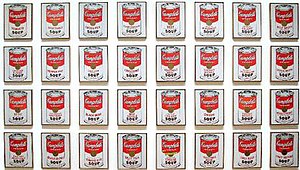If you remember the legend. In the year of our lord 1040, or perhaps it was 1057, the people of Coventry were crushed by heavy taxes imposed by their Lord, Leofric the Dane, Count of Chester, to finance his wars. His young wife, moved by the poverty of the people, implored him to reduce the charges. Knowing that she was extremely prudish, he threw down a challenge which he was sure she would never accept. To cross the town on horse back, covered by nothing but her long hair. Lady Godiva agreed ,on condition that her husband should never impose a tax again and that the people stayed cloistered at home with doors and shutters closed. This legendary tale has been illustrated many times in paintings, tapestries, sculpture and literature.
Tuesday, February 27, 2007
Godiva chocolatier
Posted by
Moo
2:34 PM

"Truly fine chocolates have several characteristics in common: they are always fresh, contain high quality ingredients like premium cocoa beans and dairy butter, are usually less sweet and feature unusual textures and natural flavors. Consequently, their taste differs greatly from less expensive chocolates, which tend to use artificial flavors and preservatives to achieve a longer shelf-life." Thierry Muret, Master Chocolatier, Godiva Chocolatier.
The Story of Godiva Chocolatiers
Godiva's history began more than seventy-five years ago in Brussels, Belgium when master chocolatier Joseph Draps founded a chocolate company that was named in honor of the legend of Lady Godiva.
At the age of fourteen, Joseph Draps went into the family business. It was there that he developed both his ability and creative talent as a master chocolate maker as well as his business sense. He then decided to create a prestige range of chocolates and to give it an evocative name.
It's not surprising that Godiva Chocolatier Inc., one of the creators of the world's most elegant, hand-crafted chocolates, originated in Brussels, Belgium. For generations, Belgium has had a tradition of perfectionism, from its Rubens paintings and gothic architecture to products made of intricate lace, glittering crystal and its fabulous cuisine.
In keeping with this tradition, the Draps family introduced Belgium to Godiva Chocolate in 1926. Later, Joseph opened the doors to his shop on a cobblestone street on Grande Place . He named his family's chocolate company "Godiva". Draps perfected a unique formula of rich chocolate with unparalleled smoothness. With a remarkable eye for detail, he set forth the standard for Godiva's innovative selection of elegant, European shell-molded designs and beautiful packaging.
Through the years, these standards have been maintained as assiduously as Draps' recipes have been guarded. As a result of this adherence to Draps heritage, Godiva Chocolates evoke the greatest in confectionery excellence. The same careful attention to quality is apparent in the exquisite European-style gold ballotins and handcrafted seasonal packaging that have earned Godiva a reputation for design excellence.
Since its introduction to America in 1966, Godiva continues to be the leader in the premium confectionery category. There are more than 200 Godiva specialty boutiques in major U.S. cities, as well as over 1,000 additional outlets in fine department and specialty stores. From New York to Paris to Tokyo , it is Godiva that brings the best of Belgium to the world.
The Brand
Godiva was first to create the concept of premium chocolate. We did this by combining a fabulous product, stimulating advertising, sophisticated packaging and selective distribution. Godiva's standards of excellence include maintaining our product's high quality by requiring special handling during storage and display. Our growing popularity as a premium product is due to our innovative approaches in manufacturing, advertising and packaging.
Since Godiva Chocolatier NV is a wholly owned subsidiary, we do not publish a separate financial statement, and do not discuss total sales, advertising costs or financial performance.
Campbell products
Posted by
Moo
2:22 PM
![]()
![]()
| Campbell North America's portfolio includes powerful retail and food service brands, including: Campbell's, Pace, Prego, Swanson, StockPot, V8, Pepperidge Farm, and Godiva. Each of these brands is #1 or #2 in its category or segment. Our North American business represents $5.2 billion in sales, with operations in the United States, Canada, Mexico, and Latin America. In addition, our Godiva business operates worldwide. USA Canada Latin America |
| Campbell International's portfolio features leading brands in Europe and Asia Pacific. Beyond the Campbell's worldwide brand, we own a variety of soup and sauce brands, including Erasco soups in Germany and Liebig soups in France. The company also owns dry soup and sauce businesses in Europe under the Royco, D&L, Heisse Tasse, and Blå Band brands. In Asia Pacific we own the Arnott's brand of biscuits and snacks. Our international business represents $1.5 billion in sales. Europe Asia Pacific |
| Campbell Brands Product trademarks of Campbell Soup Company and/or its subsidiaries appearing in the narrative text of these pages are italicized. |

yes GODIVA the famous
Campbell Soup Company
Posted by
Moo
2:13 PM
 | |
| Type | Public (NYSE: CPB) |
|---|---|
| Founded | 1869 |
| Headquarters | Camden, New Jersey, USA |
| Key people | Douglas R. Conant, CEO |
| Industry | Food - Major Diversified |
| Products | Campbell's Erasco Godiva Pepperidge Farm Arnott's Pace V8 Liebig Royco |
| Revenue | |
| Operating income | |
| Net income | |
| Employees | 24,000 (2006) |
| Website | www.campbellsoupcompany.com |
Campbell's Soup Cans
Posted by
Moo
2:12 PM
From Wikipedia, the free encyclopedia
- See also: Campbell's Soup Cans (disambiguation)
 |
| Campbell's Soup Cans |
| Andy Warhol, 1962 |
| Synthetic polymer paint on canvas |
| 50.8 × 40.6 cm, 20 × 16 inches |
| Museum of Modern Art, New York, NY (32 canvas series displayed by year of introduction) |
Campbell's Soup Cans (sometimes referred to as 32 Campbell's Soup Cans) is the title of an Andy Warhol work of art that was produced in 1962. It consists of thirty-two canvases, each measuring 20 inches in height x 16 inches in width (50.8 x 40.6 cm) and each consisting of a painting of a Campell's Soup can—one of each canned soup variety the company offered at the time. The individual paintings were produced with a semi-mechanised silkscreen process, using a non-painterly style.
The work was Warhol's first one-man gallery exhibition as a fine artist.[1][2] The combination of the semi-mechanized process, the non-painterly style, and the commercial subject initially caused offense, as the work's blatantly mundane commercialism represented a direct affront to the technique and philosophy of Abstract expressionism. The latter art movement was dominant during the post-war period, and it held not only to "fine art" values and aesthetics but also to a mystical inclination. This controversy led to a great deal of debate about the merits and ethics of such work. Warhol's motives were questioned (they continue to be topical to this day). The public commotion helped transition Warhol from being an accomplished 1950s commercial illustrator to a notable fine artist, and it also helped distinguish him from other rising pop artists. Although commercial demand for his paintings was not immediate, his association with his subject was: Warhol's name became synonymous with his Campbell's Soup Can paintings.
Warhol subsequently produced a wide variety of art works depicting Campbell's Soup cans (his career went through three distinct phases in which he expended a great deal of effort in this area), as well as other works using a variety of images from the world of commerce and mass media. Today, the Campbell's Soup Cans theme is generally used in reference to the original set of paintings as well as all subsequent Warhol drawings and paintings depicting Campbell's Soup cans. As a result of the eventual popularity of the entire series of similarly themed works, Warhol's reputation grew to the point where he was not only the most-renowned American pop art artist,[3] but also the highest-priced living American artist.[4]
Andy Warhol
Posted by
Moo
1:45 PM

From Wikipedia, the free encyclopedia
Andy Warhol (August 6, 1928 — February 22, 1987) was an American artist associated with the definition of Pop Art. He was a painter, an avant-garde filmmaker, a commercial illustrator, writer and celebrity. He founded the magazine Interview.
Childhood and early career
Warhol was born Andrew Warhola in Pittsburgh, Pennsylvania. His parents, Andrej (Andrew) Warhola (the surname was spelled Varchola in Europe, and was modified after emigrating to America) and Ulja (Julia) Justyna Zavacka[citation needed], were working-class immigrants of Rusyn (Ruthenian) ethnicity from Mikova in northeast Slovakia. Despite stories circulating about Warhol's father working in coal mines, Andrej Warhola actually worked in construction in Pennsylvania, and the family lived at 55 Beelen Street.[1] The family was Byzantine Catholic.
In third grade, Warhol came down with St. Vitus' disease, an affliction of the nervous system causing involuntary movements which is believed to be a complication of scarlet fever. This disease led to a blotchiness in pigmentation of his skin and, as an adult, he became somewhat of a hypochondriac, developing a fear of hospitals and medical doctors. Because he was at times bed-ridden as a child, he became an outcast among his school-mates and bonded with his mother very strongly (Guiles, 1989). When in bed he used to draw, listen to the radio and collect pictures of movie stars around his bed. Looking back later, Warhol described the period of his sickness as very important in the development of his personality and in the forming of his skill-set and preferences.
Warhol showed an early artistic talent and studied commercial art at Carnegie Mellon University in Pittsburgh (Carnegie Tech, at the time). In 1949, he moved to New York City and began a successful career in magazine illustration and advertising. He became well-known mainly for his whimsical ink drawings of shoes done in a loose, blotted style. These figured in some of his earliest showings in New York at the
href="http://en.wikipedia.org/wiki/Bodley_Gallery" title="Bodley Gallery">Bodley Gallery.
The 1960s
During the 1960s, Warhol transformed himself from an advertising illustrator into one of the most famous American artists of the day. In many ways, Andy Warhol and his circle helped define the decade.
It was during the 1960s that Warhol began to make paintings of famous American products such as Campbell's Soup Cans from the Campbell Soup Company and Coca-Cola, as well as paintings of celebrities like Marilyn Monroe, Troy Donahue, and Elizabeth Taylor. He founded "The Factory", his studio, during these years, and gathered around himself a wide range of artists, writers, musicians and underground celebrities. He switched to silkscreen prints, which he produced serially, seeking not only to make art of mass-produced items but to mass produce the art itself. In declaring that he wanted to be "a machine", and in minimizing the role of his own creative insight in the production of his work, Warhol sparked a revolution in art - his work quickly became very controversial, and popular.
Warhol's work from this period revolves around American Pop (Popular) Culture. He painted dollar bills, celebrities, brand name products, and images from newspaper clippings - many of the latter were iconic images from headline stories of the decade (e.g. photographs of mushroom clouds, and police dogs attacking civil rights protesters). His subjects were instantly recognizable, and often had a mass appeal - this aspect interested him most, and it unifies his paintings from this period. Take, for example, Warhol's comments on the appeal of Coca-Cola:
What's great about this country is that America started the tradition where the richest consumers buy essentially the same things as the poorest. You can be watching TV and see Coca-Cola, and you know that the President drinks Coke, Liz Taylor drinks Coke, and just think, you can drink Coke, too. A Coke is a Coke and no amount of money can get you a better Coke than the one the bum on the corner is drinking. All the Cokes are the same and all the Cokes are good. Liz Taylor knows it, the President knows it, the bum knows it, and you know it.
– The Philosophy of Andy Warhol: (From A to B and Back Again), 1975, ISBN 0-15-671720-4
This quotation both expresses his affection for popular culture, and evidences an ambiguity of perspective that cuts across nearly all of the artist's statements about his own work.
New York's Museum of Modern Art hosted a Symposium on Pop Art in December 1962, during which artists like Warhol were attacked for "capitulating" to consumerism. Critics were scandalized by Warhol's open embrace of market culture. This symposium set the tone for Warhol's reception - though throughout the decade it became more and more clear that there had been a profound change in the culture of the art world, and that Warhol was at the center of that shift.
As an advertisement illustrator in the 1950s Warhol used assistants to increase his productivity. Collaboration would remain a defining (and controversial) aspect of his working methods throughout his career - in the 1960s, however, this was particularly true. One of the most important collaborators during this period was Gerard Malanga. Malanga assisted the artist with producing silkscreens, films, sculpture, and other works at "The Factory", Warhol's aluminum foil-and-silver-paint lined studio on 47th Street (later moved to Broadway). Other members of Warhol's Factory crowd included Freddie Herko, Ondine, Ronald Tavel, Mary Woronov, and Brigid Berlin (from whom he apparently got the idea to tape record his phone conversations). During this decade, Warhol also groomed a retinue of bohemian eccentrics upon whom he bestowed the designation "Superstars", including Edie Sedgwick, Viva, and Ultra Violet. These people all participated in the Factory films, and some, like Berlin, remained friends with Warhol until his death. Important figures in the New York underground art/cinema world (e.g. writer John Giorno, film-maker Jack Smith) also appear in Warhol films of the 1960s, revealing Warhol's connections to a diverse range of artistic scenes during this period. By the end of the decade Andy Warhol was himself a celebrity, appearing frequently in newspapers and magazines alongside Factory cohorts like Sedgwick.
[edit] Shooting
On June 3, 1968, Valerie Solanas turned up at Warhol's studio and shot the artist, as well as Mario Amaya.
Before the shooting, Solanas had been marginal figure in the factory scene. She founded a "group" (she was its only member) called the "Society for Cutting Up Men" (S.C.U.M.) and authored the scabrous S.C.U.M. Manifesto, a radical feminist attack on patriarchy.[2] Solanas appears in the 1968 Warhol film, "I, A Man." Earlier on the day of the attack, Solanas had been turned away from the Factory after asking for the return of a script she had given to Warhol. The script, apparently, had been misplaced. [3]
Warhol was seriously wounded by the attack and barely survived (doctors cut open his chest and massaged his heart to help stimulate its movement again). He suffered physical effects for the rest of his life (he had to wear a corset, for example, to support his abdomen). The shooting had a profound effect on Warhol's life and art. [4]
Solanas was arrested the day after the assault (coincidentally, the day that Robert F. Kennedy was shot). By way of explanation, she said that "He had too much control over my life." After the shooting, the Factory scene became much more tightly controlled, and for many this event brought the "Factory 60s" to an end.[5]
[edit] The 1970s
Compared to the success and scandal of Warhol's work in the 1960s, the 1970s would prove a much quieter decade. This period, however, saw Warhol becoming more entrepreneurial. According to Bob Colacello, Warhol devoted much of his time to rounding up new, rich patrons for portrait commissions — including Mick Jagger, Liza Minnelli, John Lennon, Diana Ross, Brigitte Bardot, and Michael Jackson. Warhol's famous portrait of Chinese Communist dictator Mao Zedong was created in 1973. He also founded, with Gerard Malanga, Interview magazine, and published The Philosophy of Andy Warhol (1975). In this book he presents his ideas on the nature of art: "Making money is art, and working is art and good business is the best art."
Warhol used to socialize at Serendipity 3 and, later in the 70s, Studio 54, nightspots in New York City. He was generally regarded as quiet, shy, and as a meticulous observer. Art critic Robert Hughes called him "the white mole of Union Square".[6]
[edit] The 1980s
Warhol had a re-emergence of critical and financial success in the 1980s, partially due to his affiliation and friendships with a number of prolific younger artists, who were dominating the "bull market" of '80s New York art: Jean-Michel Basquiat, Julian Schnabel, David Salle and the so-called Neo-Expressionists, as well as Francesco Clemente, Enzo Cucchi and members of the Transavantguardia movement, which had become influential. In 1985, Andy Warhol was selected as one of the Absolut Vodka artists, and several of his paintings incorporating the Absolut Vodka bottle in it were used in advertisements, bringing his art to the attention of a broader audience. [citations needed]
Warhol also had an appreciation for intense Hollywood glamor. He once said: "I love Los Angeles. I love Hollywood. They're so beautiful. Everything's plastic, but I love plastic. I want to be plastic." [citation needed]
[edit] The 2000s
On the twentieth anniversary of his death The Gershwin Hotel in New York City held a week-long series of events commemorating Warhol's art and his superstars. There was an award ceremony, a fashion show, and Blondie performed at the closing party. At the same time, The Carrozzini von Buhler Gallery in New York City held an exhibit titled, Andy Warhol: In His Wake. The exhibit featured the art of Warhol's superstars Ultra Violet, Billy Name, Taylor Mead, and Ivy Nicholson as well as art by a younger generation of artists who have been inspired by Warhol. One interactive sculpture in the exhibit, The Great Warhola, by Cynthia von Buhler, depicted Warhol as an arcade fortune-telling machine. With the popularity of reality television and YouTube, Warhol's prediction of 15 minutes of fame for everyone has been realized in the 2000s. The gallery was transformed to look like Warhol's silver factory. Press from all over the world flocked to these exhibits and events. Factory Girl, a film about the life of Edie Sedgwick, starring Sienna Miller, was also released one week before the anniversary of Warhol's death.
[edit] Sexuality
Warhol was one of the first major gay American artists to be open about his sexuality. Many people think of Warhol as "asexual" and merely a "voyeur", but these notions have been debunked by biographers (such as Victor Bockris), explored by other members of the factory scene such as Bob Colacello (in his book Holy Terror: Andy Warhol Up Close), and by scholars like art historian Richard Meyer (in his book Outlaw Representation). The question of how his sexuality informed Warhol's work and shaped his relationship to the art world is a major subject of scholarship on the artist, and is an issue that Warhol himself addressed in interviews, in conversation with his contemporaries, and in his publications (e.g. Popism: The Warhol Sixties).
Throughout his career, Warhol produced erotic photography and drawings of male nudes. Many of his most famous works (portraits of Liza Minnelli, Judy Garland, Elizabeth Taylor, and films like "My Hustler", "Blow Job", and "Lonesome Cowboys") draw from gay underground culture and/or openly explore the complexity of sexuality and desire. Many of his films premiered in gay porn theaters. That said, some of the most interesting stories about Warhol's development as an artist revolve around the obstacle his sexuality initially presented as he tried to launch his career. The first works that he submitted to a gallery in the pursuit of a career as an artist were homoerotic drawings of male nudes. They were rejected for being too openly gay.[1] In Popism, furthermore, the artist recalls a conversation with the film maker Emile de Antonio about the difficulty Warhol had being accepted socially by the then-more-famous (but closeted) gay artists Jasper Johns and Robert Rauschenberg. De Antonio explained that Warhol was "too swish and that upsets them." In response to this, Warhol writes, "There was nothing I could say to that. It was all too true. So I decided I just wasn't going to care, because those were all the things that I didn't want to change anyway, that I didn't think I 'should' want to change ... Other people could change their attitudes but not me"[5]. In exploring Warhol's biography, many turn to this period - the late 1950s and early 1960s - as a key moment in the development of his persona. Some have suggested that his frequent refusal to comment on his work, to speak about himself (confining himself in interviews to responses like "Uhm, No" and "Uhm, Yes", and allowing others often to speak for him), and even the evolution of his Pop style can be traced to the years when Warhol was first dismissed by the inner circles of the New York art world.[7]
[edit] Religious beliefs
Warhol was a practicing Byzantine Rite Catholic. He regularly volunteered at homeless shelters in New York, particularly during the busier times of the year, and described himself as a religious person. Many of his later works contain almost-hidden religious themes or subjects, and a body of religious-themed works was found posthumously in his estate. Warhol also regularly attended mass during his life, and the pastor of Warhol's church, Saint Vincent's, said that the artist went there almost daily. His art is noticably influenced by the eastern Christian iconographic tradition which were so evident in his places of worship.
Warhol's brother has described the artist as "really religious, but he didn't want people to know about that because [it was] private". Despite the private nature of his faith, in Warhol's eulogy John Richardson depicted it as devout: "To my certain knowledge, he was responsible for at least one conversion. He took considerable pride in financing his nephew's studies for the priesthood".
[edit] Death
At the relatively young age of 58, Warhol died in New York City at 6:32 a.m. on 22 February 1987. According to news reports, he had been making good recovery from a routine gallbladder surgery at New York Hospital before dying in his sleep from a sudden heart attack. The hospital staff had failed to adequately monitor his condition and overloaded him with fluids after his operation, causing him to suffer from a fatal case of water intoxication, which prompted Warhol's lawyers to sue the hospital for negligence. Prior to his diagnosis and operation, Warhol delayed having his recurring gallbladder problems checked, as he was afraid to enter hospitals and see doctors.
Warhol is interred at St. John the Baptist Byzantine Catholic Cemetery in Bethel Park, a south suburb of Pittsburgh. Yoko Ono was among the speakers at his memorial service at St. Patrick's Cathedral.
Warhol had so many possessions that it took Sotheby's nine days to auction his estate after his death; the auction grossed more than US$20 million. His total estate was worth considerably more, in no small part due to shrewd investments over the years.
[edit] Works
[edit] Paintings
By the beginning of the 1960s, Warhol was a very successful commercial illustrator. His detailed and elegant drawings for I. Miller shoes were particularly popular. These illustrations consisted mainly of "blotted ink" drawings (monoprints)—a technique which he applied in much of his early art. Although many artists of this period worked in commercial art, most did so discreetly. Warhol was so successful, however, that his profile as an illustrator seemed to undermine his efforts to be taken seriously as an artist.
In the early 1960s Warhol tried to exhibit some of his drawings using these techniques in a gallery, only to be turned down. He began to rethink the relationship between his commercial work and the rest of his art. Instead of treating these things as opposites, he merged them, and began to take commercial and popular culture more explicitly as his topic.
Pop Art was an experimental form that several artists were independently adopting; some of these pioneers, such as Roy Lichtenstein, would later become synonymous with the movement. Warhol, who would become famous as the "Pope of Pop", turned to this new style, where popular subjects could be part of the artist's palette. His early paintings show images taken from cartoons and advertisements, hand-painted with paint drips. Those drips emulated the style of successful abstract expressionists (such as Robert Rauschenberg). Eventually, Warhol pared his image vocabulary down to the icon itself—to brand names, celebrities, dollar signs—and removed all traces of the artist's "hand" in the production of his paintings.
To him, part of defining a niche was defining his subject matter. Cartoons were already being used by Lichtenstein, typography by Jasper Johns, and so on; Warhol wanted a distinguishing subject. His friends suggested he should paint the things he loved the most. In his signature way of taking things literally, for his first major exhibition he painted his famous cans of Campbell's Soup, which he'd had for lunch for most of his life. Warhol loved money, so he later painted money. He loved celebrities, so he painted them as well.
From these beginnings he developed his later style and subjects. Instead of working on a signature subject matter, as he started out to do, he worked more and more on a signature style, slowly eliminating the hand-made from the artistic process. Warhol frequently used silk-screening; his later drawings were traced from slide projections. Warhol went from being a painter to being a designer of paintings. At the height of his fame as a painter, Warhol had several assistants who produced his silk-screen multiples, following his directions to make different versions and variations.
Warhol produced both comic and serious works; his subject could be a soup can or an electric chair. Warhol used the same techniques—silkscreens, reproduced serially, and often painted with bright colors—whether he painted celebrities, everyday objects, or images of suicide, car crashes, and disasters (as part of a 1962-1963 series called "Death and Disaster"). The "Death and Disaster" paintings (such as "Red Car Crash", "Purple Jumping Man", "Orange Disaster") transform personal tragedies into public spectacles, and signal the prominence of images of disaster in the media, showing how the mass reproduction of these images numbs the public.
The unifying element in Warhol's work is his deadpan Keatonesque style—artistically and personally affectless. This was mirrored by Warhol's own demeanor, as he often played "dumb" to the media, and refused to explain his work. The artist was famous for having said that all you need to know about him and his works is already there, "on the surface." Before this blankness, the lack of signifiers of sincerity, the viewer is tempted to read beyond the surface to try and discover what the 'real Andy' thinks. Is Andy horrified by death or does he think it is funny? Are his soup can paintings a cynical joke about the cheapness of mass culture, or are they homages to the simple comforts of home? His refusal to speak to how his work ought to be read made it all the more interesting—he left its interpretation entirely up to his audience.
One might say that Warhol's work as a Pop Artist was always somewhat conceptual. His series of do it yourself paintings and Rorschach blots are intended as pop comments on art and what art could be. His cow wallpaper (literally, wallpaper with a cow motif) and his oxidation paintings (canvases prepared with copper paint that was then oxidized with urine) are also noteworthy in this context. Equally noteworthy is the way these works—and their means of production—mirrored the atmosphere at Andy's New York "Factory." Biographer Bob Colacello provides some details on Andy's "piss paintings":
Victor... was Andy's ghost pisser on the Oxidations. He would come to the Factory to urinate on canvases that had already been primed with copper-based paint by Andy or Ronnie Cutrone, who was a second ghost pisser, much appreciated by Andy, who said that the vitamin B that Ronnie took made a prettier color when the acid in the urine turned the copper green. Did Andy ever use his own urine? My diary shows that when he first began the series, in December 1977, he did, and there were many others: boys who'd come to lunch and drink too much wine, and find it funny or even flattering to be asked to help Andy 'paint.' Andy always had a little extra bounce in his walk as he led them to his studio...
– Holy Terror—Andy Warhol Close Up, New York, Harper/Collins, 1990, p. 343
One could say that these "piss paintings" could be seen as a parody of Abstract Expressionism and Jackson Pollock (who was famous for pouring paint all over his canvases, often directly from the can). One could also find in them a reflection of some subsets of the gay underworld of New York of that era, including fascination with and sexual focus on urine and excretory matter in general. Demi-monde New York nightclubs of that period include "The Toilet," a spot featuring public urination acts (to include being doused by others, or drinking their urine) and others of a similar nature, such as "The Anvil." Andy visited these spots, although he was not recorded as a subject of undinistic practices, but rather, as so often, as an observer. In any case, he was wholly familiar with the undinistic, urologic, and other "watersports" practices of the day.
[edit] Films
Warhol worked across a wide range of media — painting, photography, drawing, and sculpture. In addition, he was a highly prolific filmmaker. Between 1963 and 1968, he made more than sixty films. One of his most famous films, Sleep (1963), monitors poet John Giorno sleeping for six hours. The 41-minute film Blow Job (1963) is one continuous shot of the face of DeVerne Bookwalter, receiving oral sex. Another, Empire (1964), consists of eight hours of footage of the Empire State Building in New York City at dusk.
Batman Dracula is a 1964 film that was produced and directed by Warhol, without the permission of DC Comics. It was screened only at his art exhibits. A fan of the Batman series, Warhol's movie was an "homage" to the series, and is considered the first appearance of a blatantly campy Batman. No prints of the film are known to exist.
Warhol's 1965 film Vinyl is an adaptation of Anthony Burgess' popular dystopian novel A Clockwork Orange. Others record improvised encounters between Factory regulars such as Brigid Berlin, Viva, Edie Sedgwick, Candy Darling, Holly Woodlawn, Ondine, Nico, and Jackie Curtis. Legendary underground artist Jack Smith appears in the film Camp.
His most popular and critically successful film was Chelsea Girls (1966). The film was highly innovative in that it consisted of two 16 mm films being projected simultaneously, with two different stories being shown in tandem. From the projection booth, the sound would be raised for one film to elucidate that "story" while it was lowered for the other. Then it would be the other film's turn to bask in the glory of sound. The multiplication of images evoked Warhol's seminal silk-screen works of the early 1960s. The influence of the film's split-screen, multi-narrative style could be felt in such modern work as Mike Figgis' Timecode and, however indirectly, the early seasons of 24.
Other important films include Bike Boy (1967-1968), My Hustler (1965) and Lonesome Cowboys (1968), a raunchy pseudo-Western. These and other titles document gay underground and camp culture, and continue to feature prominently in scholarship about sexuality and art - see, for example, Mathew Tinkom's Working Like a Homosexual (Duke University Press, 2002) or Juan Suarez's Bike Boys, Drag Queens, and Superstars (Indiana University Press, 1996). Blue Movie, a film in which Warhol superstar Viva makes love and fools around in bed with a man for 33 minutes of the film's playing-time, was Warhol's last film as director. The film was at the time scandalous for its frank approach to a sexual encounter. For many years Viva refused to allow it to be screened. It was publicly screened in New York in 2005 for the first time in over thirty years.
After his June 3, 1968 shooting, a reclusive Warhol relinquished his personal involvement in filmmaking. His acolyte and assistant director, Paul Morrissey, took over the film-making chores for the Factory collective, steering Warhol-branded cinema towards more mainstream, narrative-based, B-movie exploitation fare with Flesh, Trash, and Heat. All of these films, including the later Andy Warhol's Dracula and Andy Warhol's Frankenstein, were far more mainstream than anything Warhol as a director had attempted. These latter "Warhol" films starred Joe Dallesandro, who was more of a Morrissey star than a true Warhol superstar.
In order to facilitate the success of these Warhol-branded, Morrissey-directed movies in the marketplace, all of Warhol's earlier avant-garde films were removed from distribution and exhibition by 1972.
Another film, Bad, made significant impact as a "Warhol" film yet was directed by Jed Johnson. Bad starred the infamous Carroll Baker and a young Perry King.
The first volume of a catalogue raisonne for the Factory film archive, edited by Callie Angell, was published in the spring of 2006.
Filmography
- Blow Job (1963)
- Eat (1963)
- Haircut (1963)
- Kiss (1963)
- Naomi's Birthday Party (1963)
- Sleep (1963)
- 13 Most Beautiful Women (1964)
- Batman Dracula (1964)
- Clockwork (1964)
- Couch (1964)
- Drunk (1964)
- Empire (1964)
- The End of Dawn (1964)
- Lips (1964)
- Mario Banana I (1964)
- Mario Banana II (1964)
- Messy Lives (1964)
- Naomi and Rufus Kiss (1964)
- Tarzan and Jane Regained... Sort of (1964)
- The Thirteen Most Beautiful Boys (1964)
- Beauty #2 (1965)
- Bitch (1965)
- Camp (1965)
- Harlot (1965)
- Horse (1965)
- Kitchen (1965)
- The Life of Juanita Castro (1965)
- My Hustler (1965)
- Poor Little Rich Girl (1965)
- Restaurant (1965)
- Space (1965)
- Taylor Mead's Ass (1965)
- Vinyl (1965)
- Screen Test (1965)
- Screen Test #2 (1965)
- Ari and Mario (1966)
- Hedy (film) (1966)
- Kiss the Boot (1966)
- Milk (1966)
- Salvador Dalí (1966)
- Shower (1966)
- Sunset (1966)
- Superboy (1966)
- The Closet (1966)
- Chelsea Girls (1966)
- The Beard (film) (1966)
- More Milk, Yvette (1966)
- Outer and Inner Space (1966)
- The Velvet Underground and Nico (1966)
- The Andy Warhol Story (1967)
- Tiger Morse (1967)
- **** (1967)
- The Imitation of Christ (1967)
- The Nude Restaurant (1967)
- Bike Boy (1967)
- I, a Man (1967)
- San Diego Surf (1968)
- The Loves of Ondine (1968)
- Blue Movie (1969)
- Lonesome Cowboys (1969)
- L'Amour (1972)
- Flesh (film) (1968)
- Flesh for Frankenstein (1973)
aka Andy Warhol's Frankenstein (USA)- Blood for Dracula (1974)
aka Andy Warhol's Dracula (USA)
Music
Warhol adopted the band the Velvet Underground as one of his projects in the 1960s, "producing" their first album The Velvet Underground and Nico as well as providing the album art. His actual participation in the album's production amounted to simply paying for the studio time. After the band's first album, Warhol and band leader Lou Reed started to disagree more about the direction the band should take, and the contact between them faded. On December 16, 2006 collector Warren Hill successfully sold an acetate demo LP version, which he had retrieved on a flea market for $0.75, on eBay for $25,200.
Warhol designed the cover art for The Rolling Stones albums Sticky Fingers (1971) and Love You Live (1977). In 1975, Warhol was commissioned to do several portraits of the band's frontman Mick Jagger.
In 1990 Reed recorded the album Songs for Drella (one of Warhol's nicknames was Drella, a combination of Dracula and Cinderella) with fellow Velvet Underground alumnus John Cale. On Drella, Reed apologizes and comes to terms with his part in their conflict.
Warhol was also friendly with many musicians, including Bob Dylan and John Lennon - he designed the cover to Lennon's 1986 posthumously released Menlove Avenue. Warhol also appeared as a bartender in The Cars' music video for their single "Hello Again," and Curiosity Killed The Cat's video for their "Misfit" single (both videos, and others, were produced by Warhol's video production company).
Warhol strongly influenced the new wave/punk rock band Devo, as well as David Bowie - who recorded a song entitled "Andy Warhol" for his 1971 Hunky Dory album.

[edit] Books and print
Beginning in the early 1950s Warhol produced several unbound portfolios of his work.
The first of several bound self-published books by Warhol was 25 Cats Name Sam and One Blue Pussy, printed in 1954 by Seymour Berlin on Artches brand watermarked paper using his blotted line technique for the lithographs. The original edition was limited to 190 numbered, hand colored copies, using Dr. Martin's ink washes. Most of these were given by Warhol as gifts to clients and friends. Copy #4, inscribed "Jerry" on the front cover, was given to Geraldine Stutz, who at the time was with I. Miller Shoes. Later the president of Henri Bendel and then while head of Panache Press an imprint of Random House she used this copy for a facsimile printing in 1987.[8] Her estate consigned the original limited edition to Doyle New York where it sold in May of 2006 for US $35,000.[9]
Other self-published books by Warhol include:
- Gold Book
- Wild Raspberries
- Holy Cats
Later Warhol "wrote" several books that were commercially printed.
- A, a novel (1968, ISBN 0-8021-3553-6) is a literal transcription - containing spelling errors and phonetically written background noise and mumbling - of audio recordings of Ondine and several of Andy Warhol's friends hanging out at the Factory, talking, going out.
- The Philosophy of Andy Warhol; from A to B and back again (1975, ISBN 0-15-671720-4) - according to Pat Hackett's introduction to The Andy Warhol Diaries, Pat Hackett did the transcriptions and text for the book based on daily phone conversations, sometimes (when Warhol was traveling) using audio cassettes that Andy Warhol gave her. Said cassettes contained conversations with Brigid Berlin (also known as Brigid Polk) and former Interview magazine editor Bob Colacello.
- Popism: The Warhol Sixties (1980, ISBN 0-15-672960-1), authored by Warhol and Pat Hackett is a retrospective view of the sixties and the role of Pop Art.
- The Andy Warhol Diaries (1989, ISBN 0-446-39138-7, edited by Pat Hackett) is an edited diary that was dictated by Warhol to Hackett in daily phone conversations. Warhol started keeping a diary to keep track of his expenses after being audited, although it soon evolved to include his personal and cultural observations.
Warhol created the fashion magazine Interview that is still published today. The loopy title script on the cover is thought to be either his own handwriting or that of his mother, Julia Warhola, who would often do text work for his early commercial pieces.
[edit] Other media
As stated, although Andy Warhol is most known for his paintings and films, he has authored works in many different media.
- Drawing: Warhol started his career drawing commercial illustrations in "blotted-ink" style for warehouses and magazines. Most well known are his pictures of shoes. Some of his drawings were published in little booklets, like "Yum, Yum, Yum" (about food), "Ho, Ho, Ho" (about Christmas) and (of course) "Shoes, Shoes, Shoes." His most artistically acclaimed book of drawings is probably "The Gold Book," compiled of sensitive, personal drawings of young men. "The Gold Book" is thus dubbed because of the gold leaf that decorates the pages.
- Sculpture: Warhol's most famous sculpture is probably his "Brillo Boxes," silkscreened wooden replicas of Brillo soap boxes. Other famous works include the "Silver Floating Pillows"; gas-filled, silver, pillow-shaped balloons that were floated out of the window during the presentation. A "Silver Floating Pillow" was included in the traveling exhibition "Air Art" (1968-1969) curated by Willoughby Sharp.
- Audio: At one point Warhol carried a portable recorder with him wherever he went, taping everything everybody said and did. He referred to this device as his "wife." Some of these tapes were the basis for his literary work. Another audio-work of Warhol's was his "Invisible Sculpture," a presentation in which burglar alarms would go off when entering the room. Warhol's cooperation with the musicians of The Velvet Underground was driven by an expressed desire to become a music producer.
- Time capsules: Throughout his life, Warhol saved many of his correspondences, articles about himself and those which fascinated him, and numerous other items (everything from food to gay porn). Several of these items were boxed up and, progressively, numbered. They eventually totaled in the dozens. Today the Warhol Museum houses them and is in the process of opening and sorting them. As of 2007 there remain boxes which, while cataloged, have not been re-opened since their original sealing. (see external links below for more info).
- Television: Andy Warhol dreamed of a television show that he wanted to call "The Nothing Special," a special about his favorite subject: Nothing. Later in his career he did create two cable television shows, "Andy Warhol's TV" in 1982 and "Andy Warhol's Fifteen Minutes" for MTV in 1986. Besides his own shows he regularly made guest appearances in shows, including a notable appearance on "The Love Boat" wherein a Midwestern wife (Marion Ross) fears Andy Warhol will reveal to her husband (Tom Bosley) her secret past as a Warhol superstar named Marina del Rey.
- Fashion: Warhol is quoted for having said: "I'd rather buy a dress and put it up on the wall, than put a painting, wouldn't you?" One of his most well-known Superstars, Edie Sedgwick, aspired to be a fashion designer, and his good friend Halston was a famous one. Warhol's work in fashion includes silkscreened dresses, a short sub-career as a catwalk-model and books on fashion as well as paintings with fashion (shoes) as a subject.
- Performance Art: Warhol and his friends staged happenings; theatrical multimedia presentations during parties, containing music, film, slide projections and Gerard Malanga in an S&M outfit cracking a whip. The Exploding Plastic Inevitable is the culmination of this area of his work.
- Photography: To produce his silkscreens, Warhol made photographs or had them made by his friends and assistants. These pictures were mostly taken with a specific model of Polaroid camera that Polaroid kept in production especially for Warhol. This photographic approach to painting and his snapshot method of taking pictures has had a great effect on artistic photography. Warhol was an accomplished photographer, and took an enormous amount of photographs of Factory visitors, friends - given the importance of this medium to both his paintings and to film, one might say that an interest in photography lies at the center of his artistic practice.
- Computer: Warhol used Amiga computers to generate digital art.
[edit] Producer and product
In many ways Warhol refined and expanded the idea of what it means to be an artist. Warhol frequently took on the position of a producer, rather than a creator - this is true not only of his work as a painter (he had assistants do much of the work of producing his paintings), it is true of his film-making and commercial enterprises as well. He liked to coin an idea and then oversee or delegate its execution. As he refined this element of his work The Factory evolved from an atelier into an office. He became (and still is) the public face of a company, and a brand.
He founded the gossip magazine Interview, a stage for celebrities he "endorsed" and a business staffed by his friends. He collaborated with others on all of his books (some of which were written with Pat Hackett.) He adopted the young painter Jean-Michel Basquiat, and the band The Velvet Underground, presenting them to the public as his latest interest, and collaborating with them. One might even say that he produced people (as in the Warholian "Superstar" and the Warholian portrait). He endorsed products, appeared in commercials, and made frequent celebrity guest appearances on television shows and in films (he appeared in everything from Love Boat to Saturday Night Live and the Richard Pryor movie, Dynamite Chicken).
In this respect Warhol was a fan of "Art Business" and "Business Art" - he, in fact, wrote about his interest in thinking about art as business in The Philosophy of Andy Warhol from A to B and Back Again. This was a radical new stance, as artists traditionally positioned themselves against commercialism. Warhol and other pop-artists helped redefine the artist's position as professional, commercial, and popular. He did this using methods, imagery and talents that were (or at least seemed to be) available to everyone. Perhaps that has been the most meaningful result of (his) Pop Art: a philosophical and practical incorporation of art into popular culture and society, and art offered to us as a product of that society.
[edit] Museums
The Andy Warhol Museum is located in Pittsburgh, Pennsylvania. It is the largest American art museum dedicated to a single artist, holding more than 12,000 works by the artist himself.
Among others, Andy's brother, John Warhol and the Warhol Foundation in New York, established in 1992 the Warhol Family Museum of Modern Art in the remote town of Medzilaborce, Slovakia. Andy's parents were born 15 kilometers away in the village of Mikova. The museum houses several originals donated mainly by the Andy Warhol Foundation in New York and also personal items donated by Warhol's relatives.
[edit] Films portraying Warhol
Andy Warhol is portrayed by Crispin Glover in Oliver Stone's film The Doors (1991). Warhol is also represented by David Bowie in Basquiat, a film by Julian Schnabel. In the film I Shot Andy Warhol, directed by Mary Harron (1996), the actor Jared Harris portrayed Warhol. Sean Gregory Sullivan depicted Warhol in the film 54 (1998). The latest film actor to portray the artist is Guy Pearce in the 2007 film, Factory Girl.
Andy Warhol: A Documentary Film is a reverential four-hour 2006 movie by Ric Burns about Andy Warhol.
Gus Van Sant was planning a version of Warhol's life with River Phoenix in the lead role just before the latter's death in the early 1990s (as discussed in an interview with the two, included in the published My Own Private Idaho script book).











